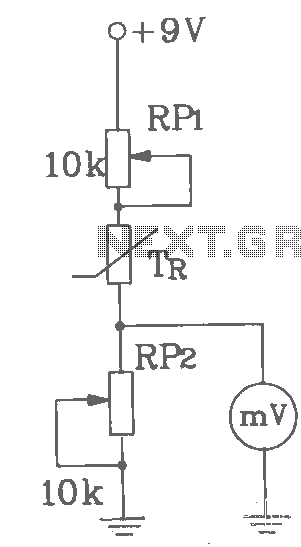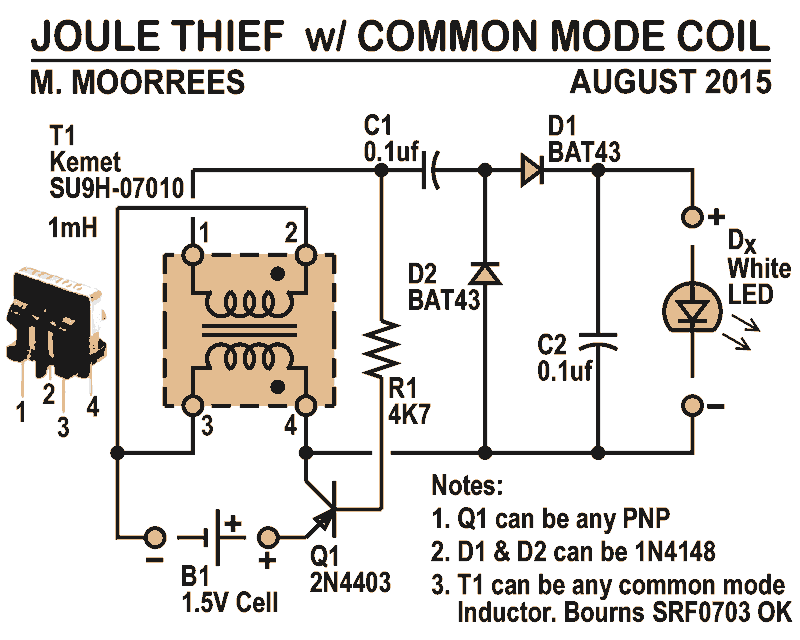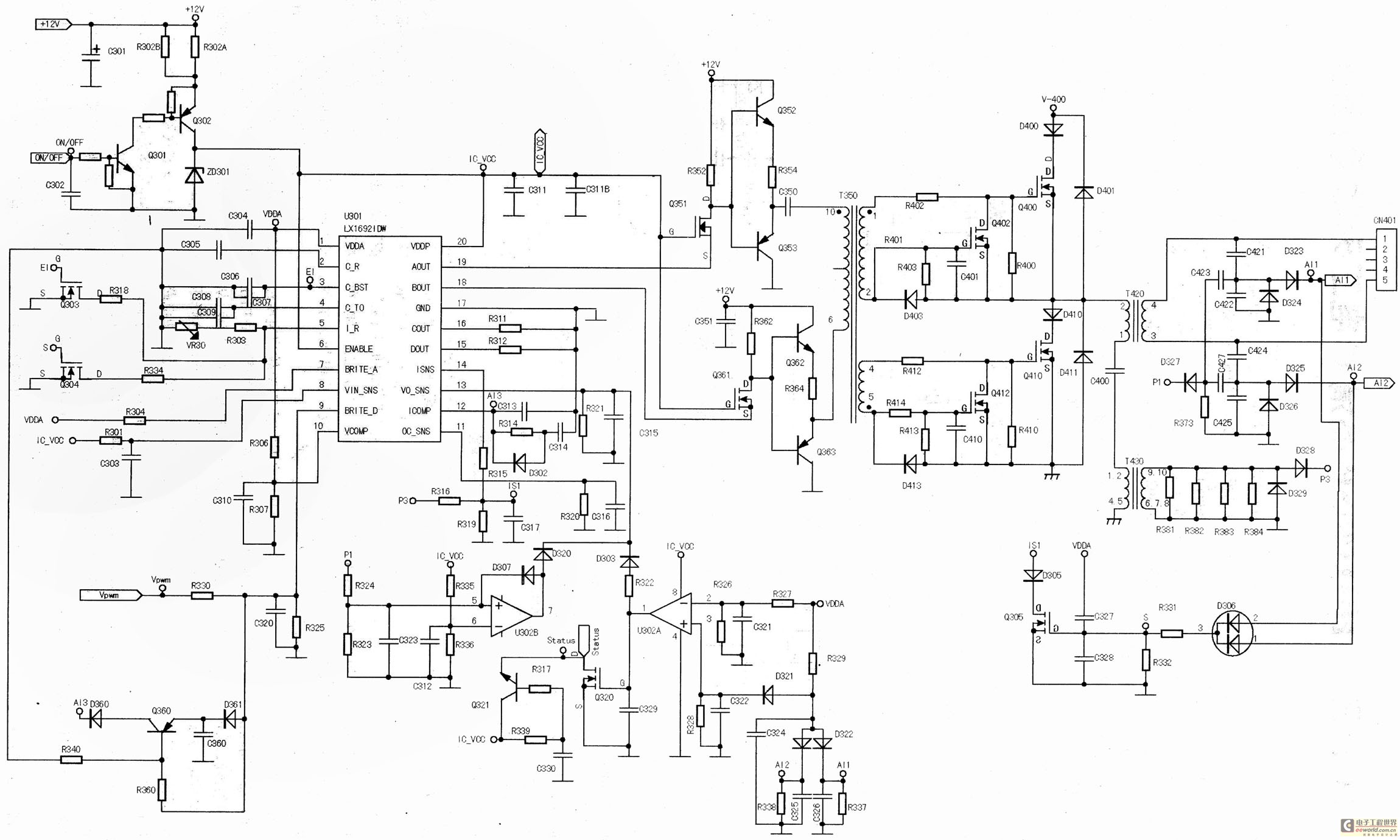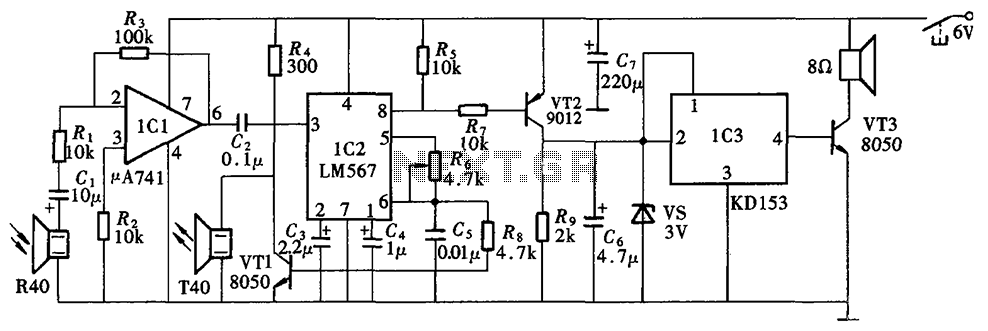
T-121 Temperature sensor circuit diagram (electronic thermometer)

T-121 temperature sensor electronic thermometer circuit diagram shown below
The T-121 temperature sensor circuit is designed to measure and display temperature readings accurately. The circuit typically consists of a temperature sensor, such as the T-121, which converts temperature variations into an electrical signal. This signal is then processed by an analog-to-digital converter (ADC) to provide a digital output that can be displayed on a digital readout, such as an LCD or LED display.
The T-121 sensor operates within a specified temperature range and outputs a voltage that is proportional to the temperature. The circuit includes essential components such as resistors for biasing, capacitors for filtering, and operational amplifiers for signal conditioning. The ADC is crucial for converting the analog signal from the sensor into a digital format that can be easily read and interpreted.
Power supply considerations are also vital for the operation of this circuit. A stable voltage source is required to ensure accurate readings. Additionally, the circuit may include a microcontroller to manage the data processing and display functions, allowing for features such as temperature logging or calibration adjustments.
Overall, the T-121 temperature sensor circuit is a fundamental design in electronic thermometry, providing reliable temperature measurements for various applications, including environmental monitoring and industrial processes. Proper layout and component selection are critical to achieving optimal performance and accuracy in temperature readings.T-121 temperature sensor electronic thermometer circuit diagram shown below
The T-121 temperature sensor circuit is designed to measure and display temperature readings accurately. The circuit typically consists of a temperature sensor, such as the T-121, which converts temperature variations into an electrical signal. This signal is then processed by an analog-to-digital converter (ADC) to provide a digital output that can be displayed on a digital readout, such as an LCD or LED display.
The T-121 sensor operates within a specified temperature range and outputs a voltage that is proportional to the temperature. The circuit includes essential components such as resistors for biasing, capacitors for filtering, and operational amplifiers for signal conditioning. The ADC is crucial for converting the analog signal from the sensor into a digital format that can be easily read and interpreted.
Power supply considerations are also vital for the operation of this circuit. A stable voltage source is required to ensure accurate readings. Additionally, the circuit may include a microcontroller to manage the data processing and display functions, allowing for features such as temperature logging or calibration adjustments.
Overall, the T-121 temperature sensor circuit is a fundamental design in electronic thermometry, providing reliable temperature measurements for various applications, including environmental monitoring and industrial processes. Proper layout and component selection are critical to achieving optimal performance and accuracy in temperature readings.T-121 temperature sensor electronic thermometer circuit diagram shown below





